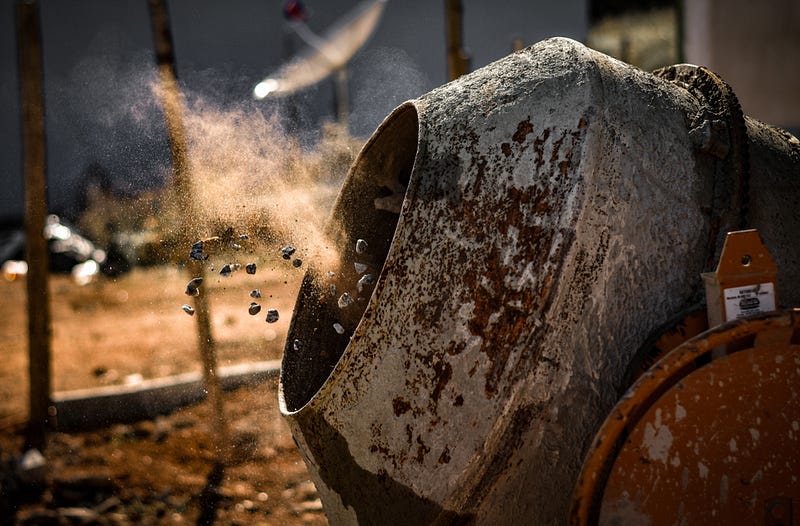Building towards the Future: Alternatives to Climate-Killer Cement
By Gabrielle Hernandez, Biochemistry, 2022

Looking at a map of the United States, one sees a winding path of arteries spreading up the Pacific Coast, through thousands of acres of farmland, and circling cities like Chicago, New York, and Boston. The more than four million miles of highways that span the United States link together a backbone of manufacturing, production, tourism, and commuters that make up the American economy. But the highways that created a streamlined way to move things from California to Maine could very well also be the downfall of the economy.
The impact of climate change will have an irreversible effect on the Earth. But while many focus on cars, planes, and single-use plastic, we forget a large contributor — cement. Surprising to any non-mechanical or material sciences majors, the process that goes into making one of the most popular forms of cement, Portland cement, is high energy and highly emissive. Cement is primarily made up of clinker, a type of carbonate that typically comes in the form of limestone. In the reaction that decomposes these carbonates, significant amounts of heat and carbon dioxide are necessary. In order to create 1000°C of heat needed for the reaction, the fossil fuels burned in the process also contribute to the overall emissions of the reaction. Ultimately, the Center for International Climate Research in Norway concluded that the cement industrial process contributes to approximately 8 percent of human-caused carbon dioxide emissions, which is rising with the growing demand for cement around the world.
The cement industrial process contributes to approximately 8 percent of human-caused carbon dioxide emissions, which is rising with the growing demand for cement around the world.
Despite this underground climate contributor, scientists across the world are already up to the challenge. One group of scientists from Madrid and Brazil evaluated the use of the expanding agricultural industry to supplement a percentage of the carbon emissions caused by cement. The material they chose to investigate was the burned remains of elephant grass. Elephant grass ash, which can be used to replace 20 percent of the composition of cement, maintains a similar mechanical behavior and texture, creating a partial substitute for the high energy reaction. Another exciting alternative out of India is Ferrock, a “carbon negative” material that could completely replace Portland cement. Made of upcycled iron dust and fly ash, two waste byproducts of the iron and coal industries, this material was substituted for portions of concrete and tested for consistency, compressive strength, and tensile strength. Ultimately, Ferrock stood up to the test and proved to be a possible alternative to concrete.
While cars shift from gasoline to electricity, and electricity shifts from coal to solar and wind, the infrastructure industry will also need to find an environmentally-friendly alternative to cement.
Nature (2013) DOI: 10.1038/494300a
Earth System Science Data (2018) DOI: 10.5194/essd-10–195–2018
Journal of Cleaner Production (2016) DOI: 10.1016/j.jclepro.2015.12.113
